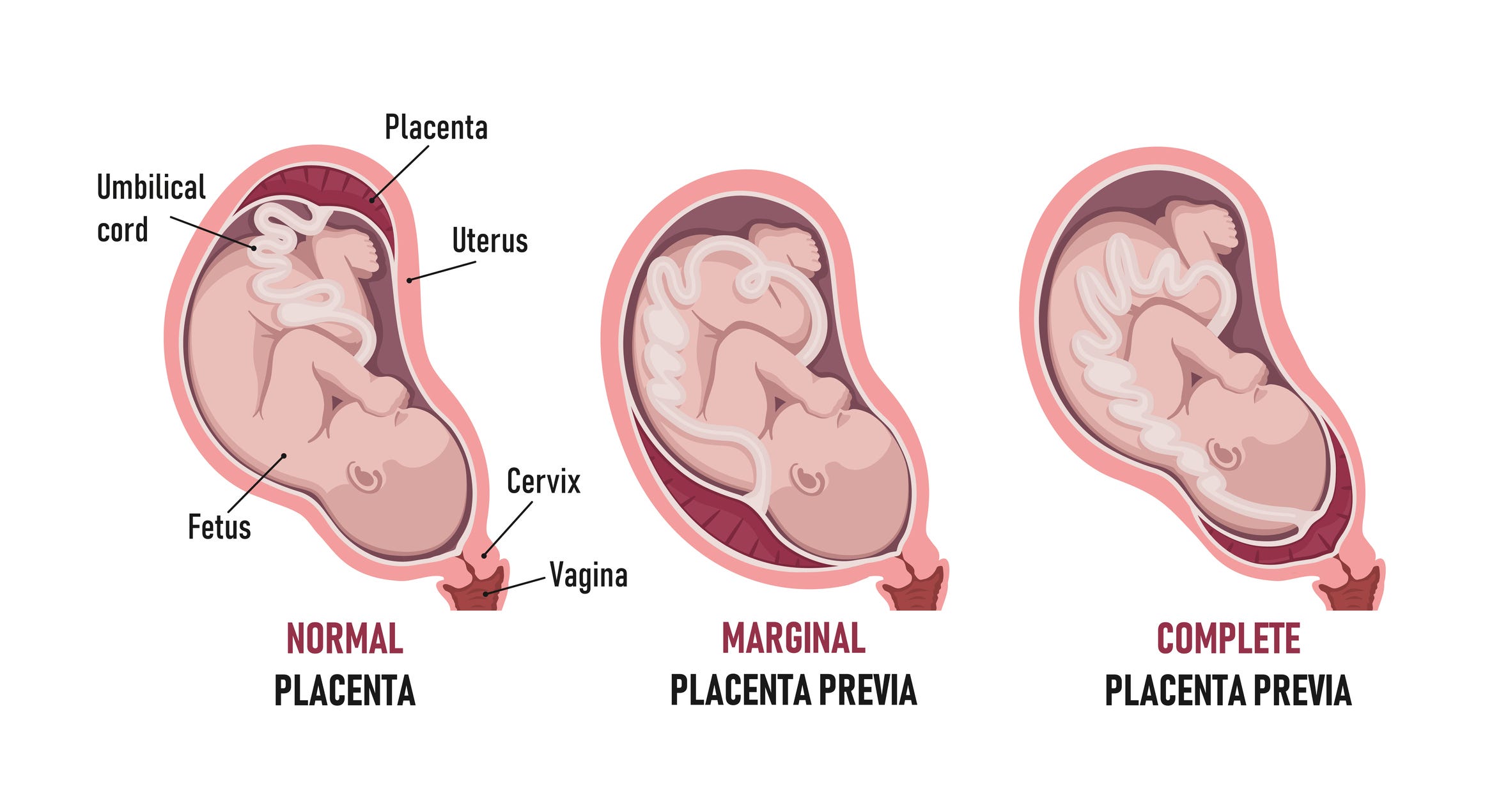
Africa Studio/Shutterstock
- Placenta previa is when the placenta partially or fully covers the cervix, which causes bleeding.
- Placenta previa has no treatment, but you can reduce bleeding by avoiding strenuous activity.
- Risk factors for developing placenta previa include smoking during pregnancy and being over 35.
- Visit Insider's Health Reference library for more advice.
When you're pregnant, any amount of vaginal bleeding is cause for concern. If the bleeding occurs during the second trimester, your doctor will perform an ultrasound to see if you have a condition called placenta previa.
Placenta previa is when your placenta is partially or totally covering the cervix. Here's what causes it and who is most at risk.
What causes placenta previa?
The placenta develops inside your uterus and serves as an essential life-support system during pregnancy. It allows the mother to transfer oxygen and nutrients to the fetus, as well as transfer waste products from the fetus back to the mother for removal.
In most pregnancies, the placenta will attach to the side of your uterus and move with the growing uterine muscle toward the top of the womb as the pregnancy progresses, which allows the cervix to open for delivery.
But in cases of placenta previa, Michael Dent, MD, an OB-GYN and CEO at HealthLynked, says the placenta implants low, about two centimeters from the cervical opening, which, in some cases, can cause complications such as bleeding throughout pregnancy and difficulties during birth.

nmfotograf/Getty Images
The good news? Getting to this point is relatively rare. In fact, placenta previa only occurs in about 0.5% of pregnancies, says Dent. "Many women diagnosed with the condition find it resolves itself naturally as the pregnancy advances," he says.
But if it does not resolve on its own, the placenta will remain partially, or completely, over the cervical opening when you go into labor, and you will likely require a C-section.
A routine ultrasound will show placenta previa
Most cases of placenta previa are diagnosed during a routine prenatal ultrasound exam around 20 weeks, says Fady Khoury Collado, MD, an OB-GYN and gynecologic oncologist at NewYork-Presbyterian/Columbia University Irving Medical Center.
Some women will experience bleeding before this ultrasound, which often prompts them to seek medical attention. But many others will have no symptoms, and find out they have placenta previa during this routine exam.
Risk factors for placenta previa
Pinpointing the cause of placenta previa is difficult. In fact, Collado says the exact reason why some patients develop placenta previa remains unknown.
However, experts do see a higher rate of placenta previa in the following situations:
- The mother-to-be is 35 or older.
- This isn't the mother's first pregnancy.
- The mother has given birth via C-section in the past.
- The mother is carrying more than one fetus.
- The mother smoked regularly throughout her pregnancy.
How to treat placenta previa
While there is no way to "fix" placenta previa prior to giving birth, your doctor will recommend ways to reduce the risk of bleeding for the remainder of your pregnancy.
The recommendations can vary from patient to patient, but Collado says they may include instructions to avoid strenuous activity, heavy lifting, and sexual intercourse.
If the bleeding is severe, your doctor may admit you to the hospital for bed rest and observation. While rare, some women will need to have an early delivery via C-section if heavy bleeding persists.
Insider's takeaway
Placenta previa is when the placenta partially or completely covers the cervix, which can cause vaginal bleeding during pregnancy. While the condition is extremely rare, the risk of experiencing this complication increases if you are older than 35, smoke throughout the pregnancy, or have had a C-section in the past.
There is no way to treat the condition during the pregnancy, but you can avoid excess bleeding by reducing activity and sexual intercourse.
